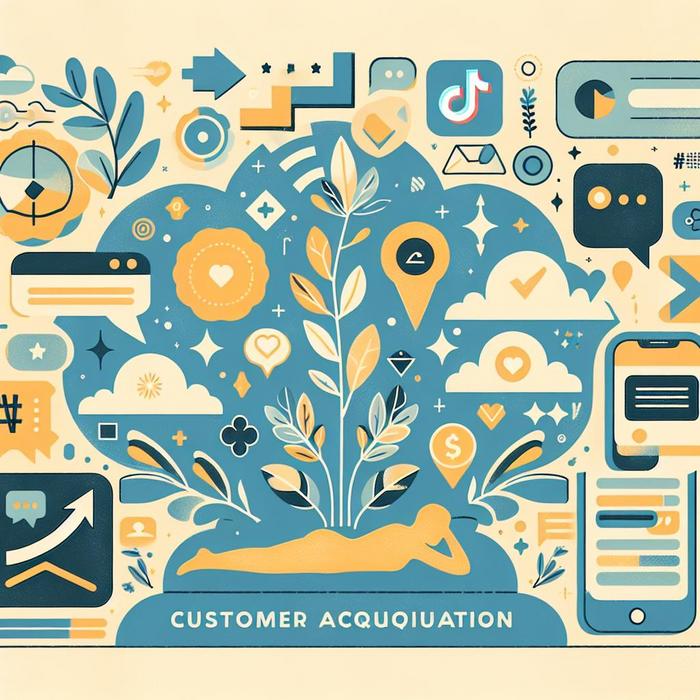Unlocking the Art of Efficient Customer Acquisition
Let’s be honest: we’ve all had our trials and tribulations with leading digital platforms such as Facebook and Google when it comes to customer acquisition. As a veteran digital marketing strategist, my journey to acquisition mastery has been a rollercoaster of experience, but a rewarding one nonetheless.
After years of trial and error, I discovered the ways to unlock user engagement with a strategic approach that pivots away from the traditional cost-per-action (CPA) model. This method empowers real-time customer Lifetime Value (LTV) to drive ad targeting decisions.
Facebook Vs. Google: A Tale of Two Titans
For years, Facebook (now re-branded as Meta) and Google have dominated advertising landscapes due to their expansive user base and sophisticated audience targeting capabilities. However, the game of customer acquisition on these platforms is not a one-size-fits-all endeavor.
In my experience, each platform brings unique strengths and weaknesses to the table that are critical to understand for successful ad campaigns. For instance, Facebook harnesses the power of social connections to display your ads to a wider audience, while Google Ads focuses on users actively searching for specific keywords related to your products or services.
Mastering Google’s Bidding Algorithms
Understanding Google’s bidding algorithms is a key component of acquisition mastery. A strategic shift from CPA to real-time LTV-led approach enables more efficient bidding on prospects. With this model, you’re not just buying clicks but capturing high-quality leads that are more likely to convert and make repeat purchases.
I’ve seen this approach dramatically reduce acquisition costs in my campaigns. By focusing on higher-value prospects and allocating ad spend accordingly, businesses can achieve a higher return on investment (ROI).
Optimizing Ad Spend on Facebook
On the other hand, Facebook’s ad ecosystem emphasizes engagement and social proof, making it an ideal platform for building brand awareness and fostering customer relationships. Again, the shift to a real-time LTV based approach provides a more refined customer targeting strategy.
This strategy has proven to be a game-changer for me. It’s helped me achieve a lower cost per acquisition by focusing on potential customers that are more likely to have a higher LTV. The result? An improved return on ad spend (ROAS) and healthier bottom lines for businesses.
TikTok: The Emerging Player
While Facebook and Google have been the front runners in the digital ad space for years, new players like TikTok are gaining traction. My experiences with TikTok ads have shown me this platform’s potential for creative, engaging campaigns that can garner millions of views and engagements in a short time.
To maximize campaign effectiveness on TikTok, I’ve found the aforementioned LTV-based approach to be beneficial. It took some trial and error to refine, but the results were worth the effort.
The Future of Customer Acquisition: A New Paradigm
In conclusion, the race for customer acquisition is far from stagnant. But with diligent application of the right strategies, digital marketers can stay ahead and clinify their campaign results. I invite you to join me on this journey to acquisition mastery. Let’s navigate this ever-evolving landscape and forge ahead into a new era of customer acquisition.
Ad Strategy Innovation: How to Reduce Cost and Increase Efficiency
Achieving maximum efficiency in digital ad campaigns requires a new strategic approach. The conventional CPA model, while simple, is often inadequate for accurately predicting customer value. This is partly due to the fact that it does not account for factors like customer lifetime value and acquisition. I took the plunge and embraced a customer-centric strategy, assessing the potential return of customer engagement beyond immediate conversions, thereby optimizing my ad expenditure.
I found illustrations of these principles in practice in an enlightening read at DataFeedWatch. It provides practical insights on moving away from over-reliance on high-risk, high-reward segments of the market, taking a more nuanced approach instead.
A Deeper Dive into Meta’s Ad Potential
Meta, formerly known as Facebook, provides marketers with enormous potential for brand exposure and audience reach. However, the key to unlocking its full potential lies in leveraging its advanced ad targeting capabilities to your advantage. To do this, closer attention needs to be given to customer lifetime value – a shift that demands familiarity with metrics like Average Revenue Per User (ARPU) and Life-Time Revenue (LTR).
Using this paradigm for Meta Ad campaigns illuminates potential upsides, such as gaining consumer insights and ameliorating customer acquisition costs. From my experiments with this platform, these improvements were particularly emphasized.
Google vs Meta: Comparative Analysis
Google and Meta each have distinctive strengths and weaknesses to be harnessed, depending on your unique marketing needs. Their comparative performance can determine the optimal platform for various ad strategies.
Google’s strength lies in its formidable search engine capabilities. It provides a more specialized audience based on search history and patterns. Meta, with its social media backbone, offers a largely diversified audience, but also presents opportunities for targeted messaging by monitoring users’ preferential patterns.
The final decision to opt for either platform hinges on specific business goals and the type of product or service being marketed. By analyzing these factors, a strategic direction for ad placement can be determined.
Keys to Success on TikTok
The entry of TikTok as a serious contender in the online advertising field was initially met with skepticism. However, the platform is making significant strides and a serious case for itself as an ad space worth more consideration. From my personal experience with TikTok ads, the platform offers immense potential for reaching younger demographic segments.
For TikTok, the LTV approach adds a layer of sophistication to what might otherwise have been a broad-stroke ad placement decision. Embracing this approach, I was able to tailor ad strategies towards users bound to generate higher ROI. This grants TikTok a competitive edge in the market, making the newer ad platform an exciting arena for seasoned and budding marketers alike.
Looking Forward: Continuous Learning and Adaptation
Keeping pace with the rapid evolution of digital advertising landscapes requires constant learning and adaption. Mastering this fluidity and unpredictability is a challenging but rewarding journey of professional growth. Webinars and expert blogs like Journal of Accountancy and WordStream provide valuable insights for developing a data-driven perspective.
After years on this journey, I can confidently affirm the benefits of this customer-led engagement approach. The transformations seen in campaign results are a testament to the capabilities of this strategy across various platforms. Going forward, the digital marketing landscape looks promising, teeming with exciting opportunities for those ready to embrace innovation and continue learning.
In each step of our individual and collective journey, let’s strive to make disruptions our stepping stones to bigger conquests. As we explore this ever-evolving domain, we can continually adapt, improve, and find new means of achieving the elusive objective of optimal customer acquisition.


